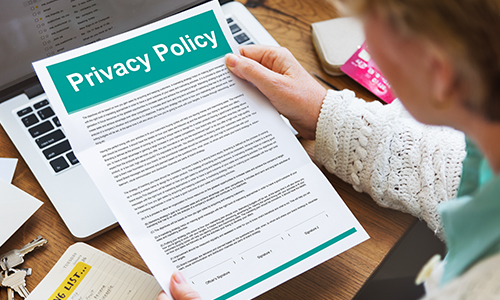In today’s progressive society, prioritizing workplace safety for women is not just a legal obligation but a moral imperative. Employers must go beyond mere compliance and strive to create environments where women feel empowered, respected, and protected.
In this blog post, we’ll explore some crucial strategies to ensure workplace safety for women, fostering an atmosphere of inclusivity and security.
1. Understand the Challenges

Women face unique challenges in the workplace, ranging from subtle biases to overt discrimination and harassment. Employers must acknowledge these challenges as the first step toward creating a safer environment. Conducting regular surveys and focus groups can help employers gain insights into the specific concerns of female employees.
2. Create a Physically Safe Workplace

Ensuring a physically safe working environment is paramount. This comprises secure entryways and exits, well-lit parking lots and pathways, and well-maintained amenities. To prevent possible dangers to workplace health and safety, employers should also provide sufficient security measures, such as surveillance cameras and on-site security officers.
3. Robust Anti-Harassment Policies

Regardless of its size, every organization should have an anti-harassment policy for maintaining safety at work. These policies should clearly define prohibited behaviors and sexual harassment. Regular safety programs in the workplace on harassment prevention can also raise awareness and empower employees to intervene when necessary. Employers should adopt a zero-tolerance policy on sexual harassment as they mean it. The only thing that deters is treating the perpetrators strictly.
4. Safe Reporting Mechanisms

Employers must provide multiple channels for reporting incidents and outline swiftly. Establishing confidential and easily accessible reporting mechanisms for incidents of harassment, discrimination, or unsafe conditions. Must ensure that women feel safe and supported when reporting concerns. Women employees are less likely to report instances of sexual harassment due to the societal stigma. Therefore, people in leadership roles must encourage their subordinates to call out improper behavior or report workplace sexual harassment by using an established complaint procedure to ensure office safety.
5. Promote a Culture of Respect

Giving a woman worker a high-profile post that she merits will go a long way towards helping her break down gender barriers. As more and more female employees take on project management responsibilities independently, they will uplift each other at work, and gain more authority, self-assurance, and respect. It will be simpler for organizations to attain safety and health in the workplace as the feminine voice grows stronger and stronger.
6. Supportive Management

Supportive management refers to a leadership approach focused on providing guidance, encouragement, and assistance to women employees to help them succeed in their roles. Creating an environment at work that cultivates a sense of value, respect, and motivation among women employees. This management style involves listening to employees’ concerns, offering constructive feedback, providing resources and training, and actively addressing any issues or obstacles that may arise. It is also one of the proven strategies for retaining women in the workforce.
7. Flexible Work Arrangements

Offering flexible work arrangements, such as flexible hours, and fostering a culture of respect and inclusivity demonstrate an employer’s commitment to the safety of women in the workplace. Some common types of flexible work arrangements include:
- Telecommuting or Remote Work
- Flextime
- Compressed Workweek
- Job Sharing
- Part-Time Work
Flexible work arrangements can benefit working mothers as well as employers by improving work-life balance, increasing job satisfaction, reducing commuting time and costs, and enhancing productivity and morale.
8. Regular Review

Regular review in the context of workplace safety for women involves consistently evaluating existing policies, procedures, and practices to identify areas for enhancement. Regularly assessing the effectiveness of current workplace safety measures, collecting solicit feedback from employees, particularly women, regarding their experiences with workplace safety. Once the information is gathered analyze and compare reports with industry standards to identify patterns in unsafe behavior or conditions.
9. Proactive Actions by HR

HR has a pivotal role in addressing any complaints regarding women’s safety at the workplace to higher authorities. Their involvement is essential to ensure impartial action from the management. Establishing a dedicated Women’s Safety Cell is recommended to effectively address female employees’ complaints and concerns regarding a safe work environment. This specialized cell would provide support in various aspects, including grievance resolution, legal advice, psychological Safety in the workplace, medical aid, and more. Additionally, the cell could offer counseling to male employees to increase awareness of the challenges faced by their female counterparts.
10. Put in Action

To bring out the changes effectively, employers must develop action plans to address identified gaps or areas for improvement and put the action plans into practice, ensuring that changes are effectively communicated to employees and properly implemented throughout the organization.
Continuously monitoring the effectiveness of implemented changes. Maintaining detailed records of all improvement activities to track the progress. By regularly reviewing and improving workplace safety measures, organizations can proactively address emerging threats and create a safer and more supportive environment for women and all employees.
Organizations must prioritize women’s safety not only for ethical reasons but also for organizational success and reputation. By committing to zero-tolerance policies and proactive measures, businesses can harness the talent and potential of women, contributing to a more equitable and prosperous future for all.
Leia
Related posts
Women Tips
Privacy Overview
| Cookie | Duration | Description |
|---|---|---|
| cookielawinfo-checkbox-analytics | 11 months | This cookie is set by GDPR Cookie Consent plugin. The cookie is used to store the user consent for the cookies in the category "Analytics". |
| cookielawinfo-checkbox-functional | 11 months | The cookie is set by GDPR cookie consent to record the user consent for the cookies in the category "Functional". |
| cookielawinfo-checkbox-necessary | 11 months | This cookie is set by GDPR Cookie Consent plugin. The cookies is used to store the user consent for the cookies in the category "Necessary". |
| cookielawinfo-checkbox-others | 11 months | This cookie is set by GDPR Cookie Consent plugin. The cookie is used to store the user consent for the cookies in the category "Other. |
| cookielawinfo-checkbox-performance | 11 months | This cookie is set by GDPR Cookie Consent plugin. The cookie is used to store the user consent for the cookies in the category "Performance". |
| viewed_cookie_policy | 11 months | The cookie is set by the GDPR Cookie Consent plugin and is used to store whether or not user has consented to the use of cookies. It does not store any personal data. |

